Every country has some foods that are instantly recognised as being associated with it – for instance, in England it is going to be roast beef and Yorkshire Puddings, or maybe fish and chips; Japan is probably sushi. France? Maybe Foie gras or cheeses such as Camembert and Brie.
Argentina is famous for its meat, of course, and especially for the beef, but all Argentineans have a deep longing for sweetness….. because wherever you go in Argentina you will find dulce de leche (literally “sweet of milk”) – the most delicious caramelised milk, made from sweetened condensed milk. Sweet, sticky, almost softly caramel toffeeish…
When you go to breakfast, there are little pots of it, waiting to be spread on toast… when you have a pastry or a biscuit, there’s usually dulce de leche involved somewhere, either as a filling or a flavouring. You can buy lovely large pots of artisan made Dulce de Leche or commercially produced packets. Whatever you get is guaranteed to taste delicious.
One of our dearest friends is from Argentina and he always looks wistful at the mention of dulce de leche when he is far away in cold, wet England.
The thing is, it’s not difficult to make… it is, however, (usually) time consuming… and, in my eyes at least, just a bit scary.
The traditional way is to take a large quantity of milk and sugar and, after pouring it in a pan, slowly simmer it until it thickens as the water evaporates and it caramelises to a wonderful golden brown. Thing is, you have to stir it constantly – you can’t walk away and leave it.
Another way is to take a tin of sweetened condensed milk and boil it, unopened, in a pan for a couple of hours. You can’t walk away from that, either. If you let it boil dry the tin will explode and the kitchen (and any unwary inhabitants) will be covered in superheated caramel. If you avoid that fate then you have to take care to leave the tin to cool properly before you open it.
See what I mean about it being a bit scary? And if you went down the boiling tin route, how would you know that it had caramelised perfectly?
So, I was content to eat it but too afraid to try making it.
Until I found, whilst idling around various food blogs, (one of my favourite activities) an article by David Lebovitz telling me how to make it safely and quickly!
He says to make it in the oven in a bain marie and that it only takes one and a quarter hours…… what’s to lose, I thought? I just had to try it out.
I needed an oven proof dish and a tin of sweetened, condensed milk.
The oven needed to be preheated to 220 degrees C/200 degrees if fan assisted) 425 degrees F
I put the oven proof dish inside a large metal roasting dish and then poured in the milk.
A sprinkle of Maldon sea salt was stirred through.
I wrapped tin foil tightly over the dish and poured hot water into the roasting pan until it was half way up the sides of the dish with the condensed milk it.
And that was it.
Into the oven for an hour and a quarter, or thereabouts.
And no standing over it, terrified that it might boil dry and the tine explode… no standing for hours, stirring it slowly. Just as well because this was a Friday night after my first week back at work with jet lag and all I wanted to do was slump on the sofa.
I did check after about 40 minutes that it hadn’t boiled dry (it hadn’t) and I couldn’t resist having a peek at the colour…..
It was turning golden!
And, oh, the smell….. delicious, rich, sweet caramel aromas coming from the oven… Someone should make that smell into a scented candle or room perfume…
And then… just an hour and a quarter after putting it in the oven
It looked good.
But it was too hot to taste so I had to leave it to cool. David said to whisk it to get out lumps out but it was fine.
Oh my word.
Thick, delicious, spoonable delight. It was dulce de leche.
And I had such plans for it…..
But I needed a real assessment to be done – was it good enough? Did I have to go back to the traditional way of doing it?
As I said, we have a very dear friend from Argentina. It was his marvellous mother who organised all of our travels around the country (Thank you, P!) and he was with us for most of them. Who better, I thought, than N?
That was it – when I saw him, I marched up with a spoonful held out in front of me and demanded he tried it.
He liked it! Not only that he said it was delicious!
N’s fiancee, L, had made it the traditional way before now and both of them reckon that this way produces dulce de leche of comparable deliciousness with a minmum of effort.
So, there we have it – quick, safe and easy. Delicious and moreish. Rated by people who know what it should taste like… and by those just want to scoop it into their greedy mouths!
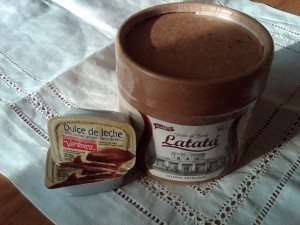
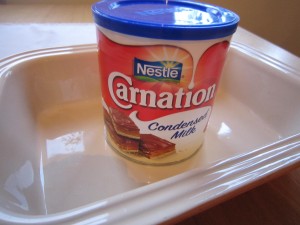
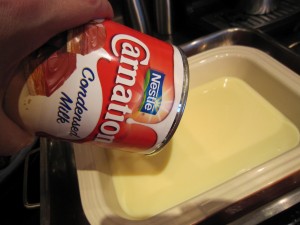
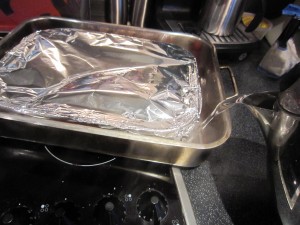
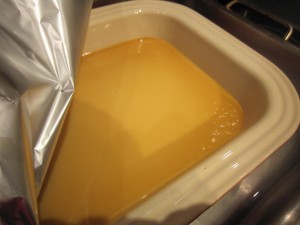
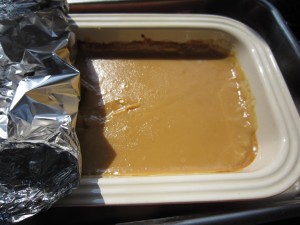
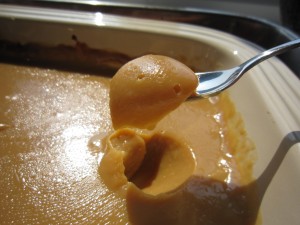
Oh good, thanks for this. I have always made it in the boil in the tin way, but I have always been a bit worried it might explode. It wouldn’t be too disastrous as it sits in the simmering oven of my aga, but I still wouldn’t fancy cleaning up the mess or ruining a good pan. Glad you are safely back and hope the jet lag is over and done with.
I am such a coward, Kath, I was always too worried about accidents to try it! I was glad to do it this way. Back at work and the jet lag is over…. which means I have no excuse for nodding off over the keyboard 😉
Oh yum! We do the boiling tin version on the southern states and I remember aunts making it.
This looks much safer and I bet is it gorgeous on fruit or ice cream!!!
Thanks Wen!
You must try doing it yourself, Stef.. I made a gorgeous dessert with it – that post is coming up next week!
Wendy dear !!! excellent articule in our dulce de leche !!! I agree with your procedure to make it !! I am sure the taste might have been delicious.- Thanks a lot for spoiling my son !! To tell you the truth , Leo , Rafael , Adriana and me , miss you & Graham a LOT!!! but life continues ……..thanks to the almighty. Best regards , Perla
ps. I compromise myself of sending you a good way of making our empanadas.-
Ohhhh… empanadas… next on the list to make! Thank you perla!
Oh thank you, thank you. I have wanted to have a go at making it myself, but was too scared. This looks far easier and less scary. I’ve just posted about dulce de leche brownies, so if you’re looking for ways to use it up ……!
Glad you had a great time and arrived home safely, if tired!
Dahling Wendy! You’re back & can’t wait to hear all about it! 🙂
Oh WOW what a post! So much better than waiting for the can of condensed milk to explode. Let me see – traditional dulce de leche & 3rd degree burns or your way? Your way I say – it looks incredible and you have inspired me to do a dulce de leche cake.
Will keep you posted 🙂
Ciao,Devaki @ weavethousandflavors
That looks really delicious, thanks for an alternative method, although I’m trying to avoid such calorific treats!
Devaki – there are lots of pictures on Omnivorous Bear’s Facebook … add me if you want to look at them. It was a truly fantastic country!
And as a method of making dulce de leche.. well, this coward knows which one to go for… and Janice… a little bit won’t hurt….. 🙂
I’m so glad you enjoyed your trip 🙂 this dulce de leche looks soooo good, and I MUCH prefer your method; I’ve always been too feart to try it myself! Will have to give this one a go though 🙂
Wow delicious…am book marking this 🙂
🙂 Thank goodness I wasn’t the only one who was too scared to try boiling a tin! And who on earth thought it would be a good idea to do it that way in the first place? I can understand the boiling down of milk and sugar in the traditional way but why not open the tin? Anyway… there you are, a way to do it without half killing yourself!
I love dulce de leche but have always been a little too intimidated to make it myself. Thanks for posting this..I will certainly try it now!
I’ve always thought Dulce De Leche involved some other process more complicated than boiling condensed milk. I’ve been eating this for years and calling it caramel! I still believe that for a cheat method of melting a few caramac bars with a little butter As per my blog suggests is the quickest route to making a sauce similar to this… not the same though 🙂
Well, Justin, most Argentinians use the tin but the original method is milk and sugar and a lot of standing around and stirring it! I like the idea of Caramac bars… though the texture of dulce de leche is probably better for eating by the spoonful 😉